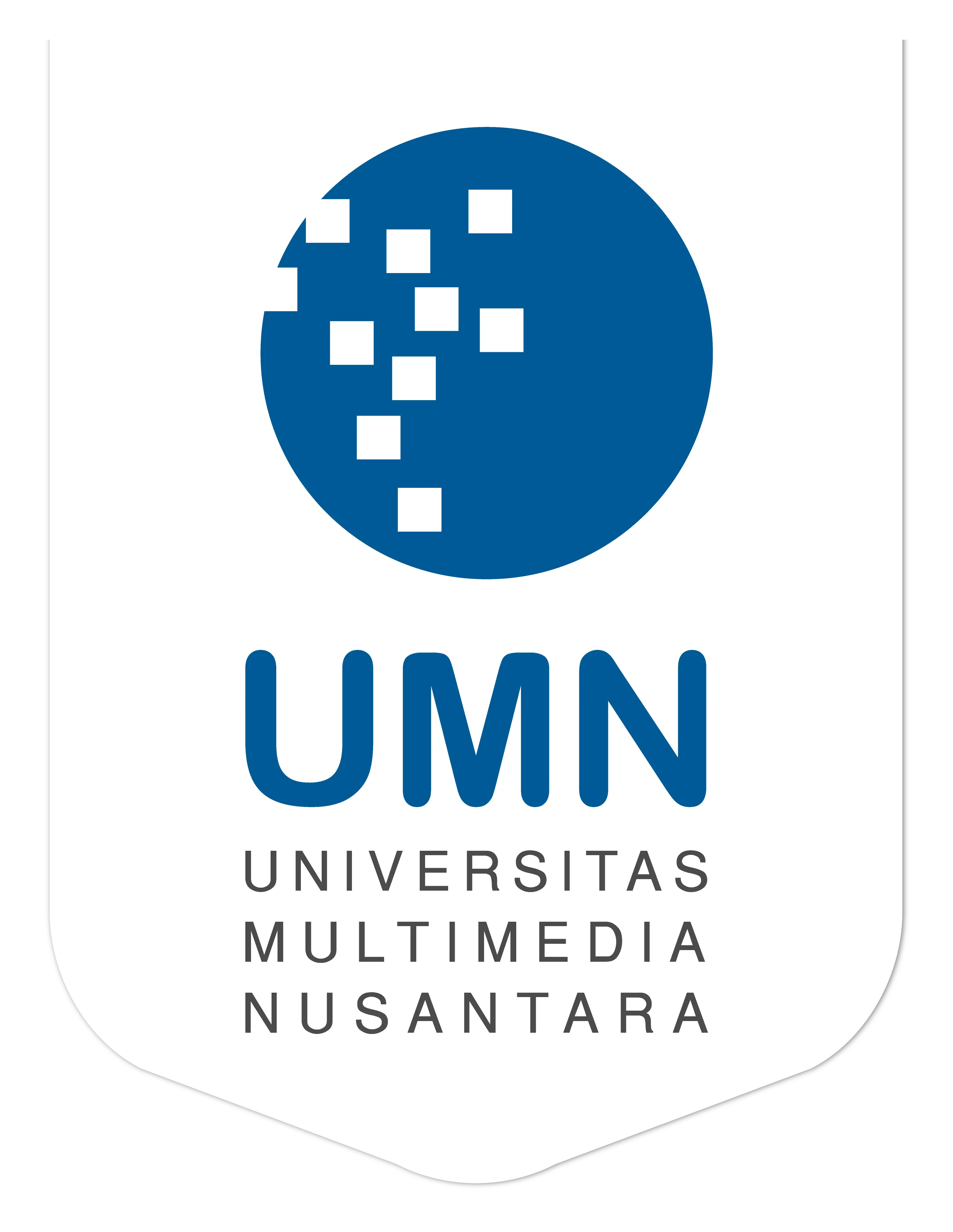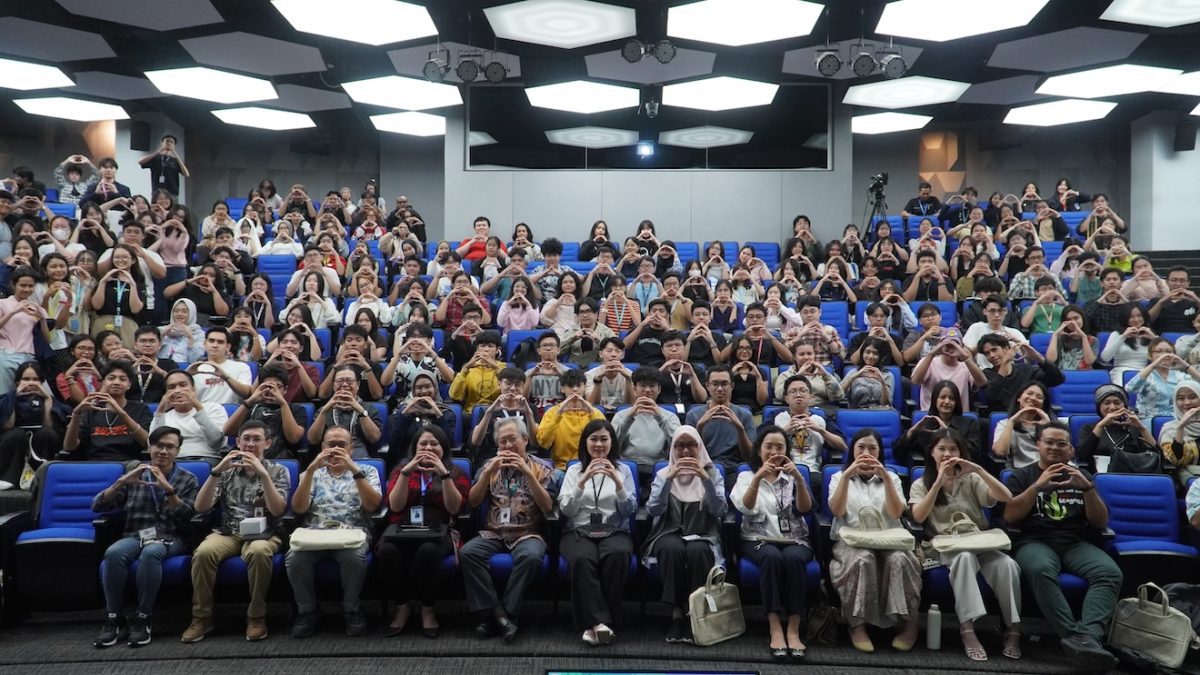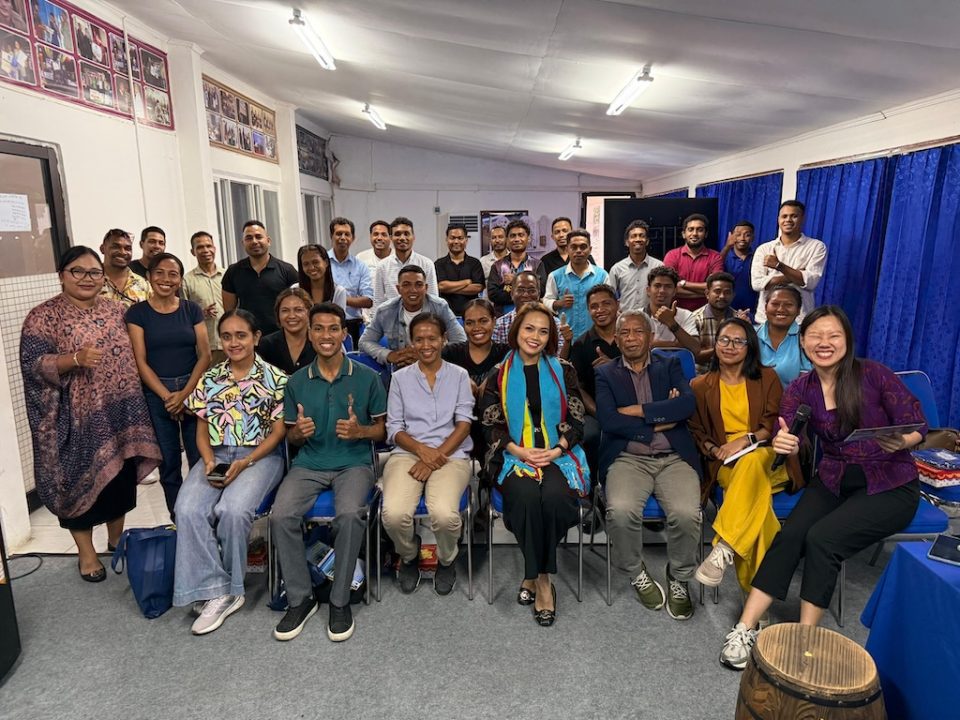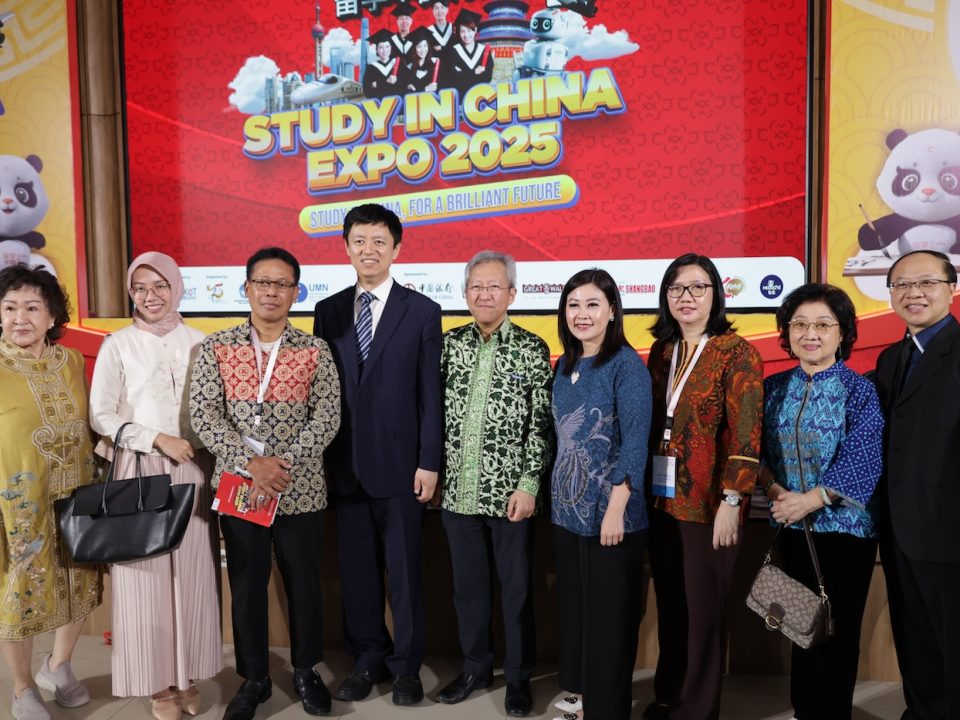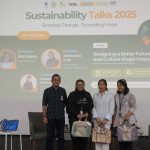
Sustainability Talk: The Role of Sustainable Design for The Future
October 3, 2025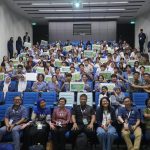
Banten UMN Young Researchers Competition 2025
October 3, 2025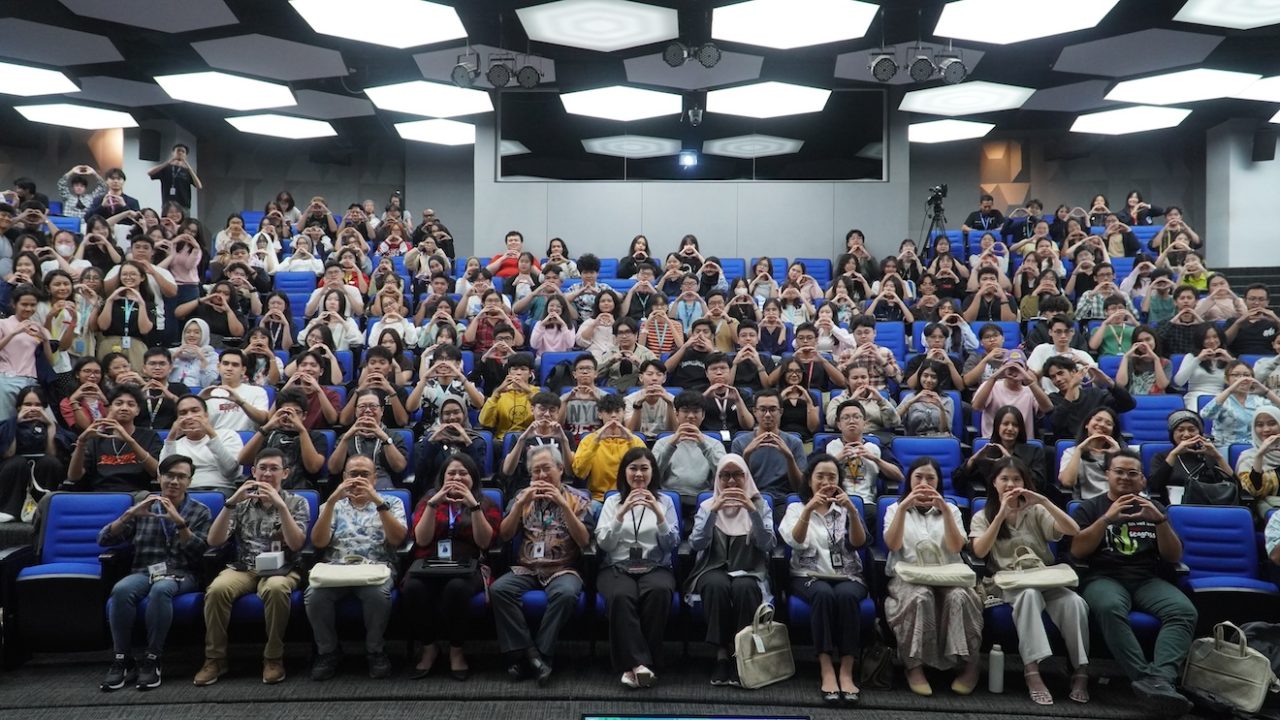
Group photo from the Sustainability Talk session with the UMN Faculty of Communication Sciences. (Doc. UMN)
Tangerang, Tuesday (09/20/2025) – The UMN Sustainability Center held a Sustainability Talk as part of the UMN 2025 Sustainability Week series of events. This Sustainability Talk was held in collaboration with the UMN Faculty of Communication Sciences. With the theme “Frames of Change: Communicating Crisis, Building Hope,” the seminar was attended by six speakers who explored the important role of communication in sustainability issues. The seminar was moderated by Helga Liliani Cakra Dewi, S.I.Kom., M.Comm., Head of the UMN Communication Studies–Distance Learning Program.
Currently, sustainability is a hot topic in various media, opinions, and issues in society. This Sustainability Talk discusses how media and community organizations communicate matters related to sustainability. The six speakers will present different perspectives with one common goal.
Media strategies and roles in sustainability
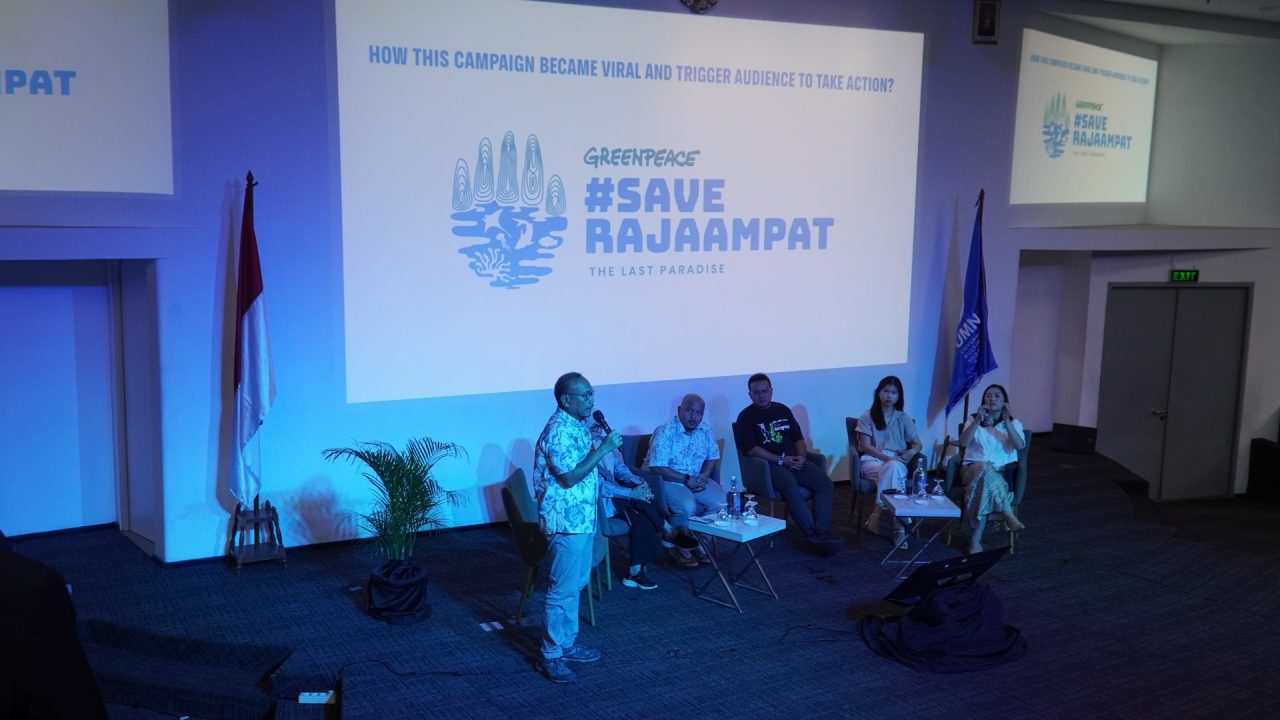
Presentation of material in the Sustainability Talk with the UMN Faculty of Communications (Doc. UMN)
Currently, the media and community organizations play an important role in communicating issues and raising public awareness. One of the hot sustainability issues discussed lately is #SaveRajaAmpat. Of course, communicating this issue requires the right strategy so that the public can clearly understand and become more aware of the importance of sustainability. This topic was presented by Leonard Simanjuntak, Country Director of Greenpeace Indonesia.
“The Save Raja Ampat campaign has become the largest campaign in terms of public support, and the initial video, ‘Wajah Lain Raja Ampat’ (The Other Face of Raja Ampat), has reached 717k viewers. On social media platforms such as X and Instagram, we have also succeeded in building public emotion and awareness of this urgency. We are highlighting the impact of nickel, which can damage biodiversity and the environment in Indonesia. So we have been actively sharing information about Indonesian regions whose environments are being damaged by the nickel industry,” Leonard explained.
Of course, the success of this campaign required the right strategy, particularly Greenpeace’s efforts to foster a sense of belonging among the public and build awareness through social media. Leonard chose social media platforms because many Indonesians are more active in seeking information online. Greenpeace conducted various initiatives, including research, to strengthen the campaign.
“In creating a campaign, the call to action must be clear. What are we asking from the public? Of course, the content must be entertaining and informative. In this campaign, we also use an emotional storyline, so that the campaign is delivered in an entertaining way but can reach the emotional side of the audience,” Leonard added. The seminar was also continued by Dimas Fikhriadi, General Manager of Sustainability at KG Media, who also explained how the role of the media is vital.
“Lestari KG Media was launched in 2023. In this channel, we highlight content about sustainability and have received a lot of support from all media outlets in Kompas. KG Media emphasizes literacy for the community, and of course, real action is needed. We cannot just educate but not take action,” Dimas explained.
The first step taken by Dimas and his team was to calculate the company’s carbon footprint, and this action will be further expanded in 2025. Of course, the most important thing for Dimas is to collaborate with various parties, ranging from the industry, international media to institutions in Indonesia, so that this step can spread information about sustainability.
“Three important things for the media to do are to build and raise public awareness about sustainability, take concrete action to raise public awareness, and ensure accountability. The topic of sustainability is very complex, so it is important for the media to convey it in easy-to-understand language, of course with credible sources,” Dimas added.
For Dimas, the challenge faced by the media is the low level of literacy regarding sustainability issues. According to the data presented, only 0.3% of people are interested in sustainability issues. However, according to research conducted by Dimas, the public is now more cautious in making decisions about sustainability issues, ranging from product background, industry, investment, and various other decisions. Dimas emphasized that sustainability will be a great opportunity, especially among the younger generation.
The role of community organizations in communicating sustainability
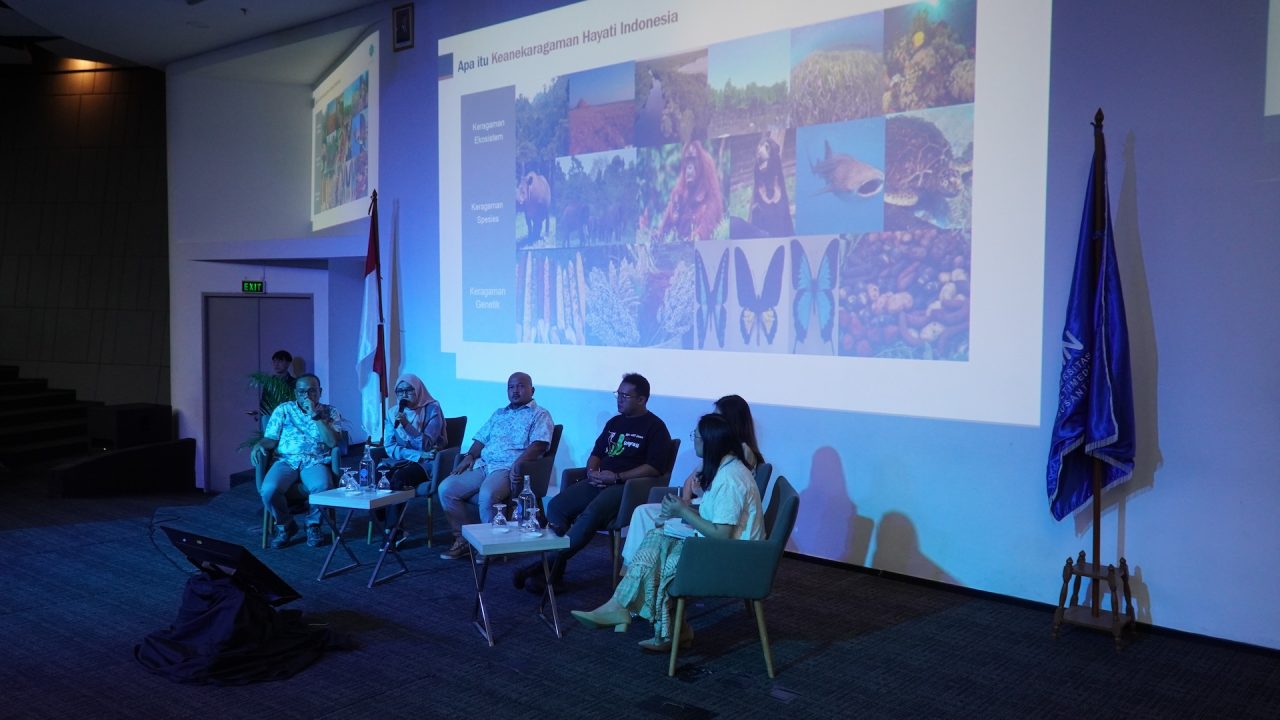
Presentation on biodiversity at Sustainability Talk. (Doc. UMN)
Two community organizations with similar focuses also attended this Sustainability Talk. Both speakers had the opportunity to share their knowledge on how community organizations communicate sustainability issues in the current era.
The digital world today is vast and contains a wide variety of content, but we need to know what content we want to choose. Kehati has a wide variety of content and also collaborates with influencers on social media to raise public awareness about this issue. “For example, we collaborate with influencers who produce cooking content on local food,” Rika Anggraini, Director of Communications and Partnerships at the KEHATI Foundation, said.
In addition to video content on the TikTok platform, there is also macro photography content that focuses on detailed photographs of biodiversity. Through this content, more people are becoming educated about biodiversity in Indonesia. Additionally, Kehati is collaborating with the well-known brand The Body Shop to increase public awareness and promote sustainability. This initiative was followed by a presentation by Ferry Febrian, Co-Founder and Conservation Manager of Seagrass.
“The public rarely knows Seagrass, and it is a marine plant, just like plants on land. Seagrass has roots, stems, leaves, can flower, and can reproduce. One of the things that makes seagrass unique is that it can absorb carbon emissions and will not return to nature unless we destroy the seagrass plants,” Ferry explained.
Ferry himself chose to focus on seagrass because, based on economic evaluations, it not only absorbs carbon emissions but also feeds fish, as many fish breed in seagrass. Ferry explained that Indonesia is very rich in seagrass, with 17 species.
“Of course, our challenge is to educate and raise awareness about seagrass beds. Few people in Indonesia know about seagrass, and many still think that seagrass and seaweed are the same thing. I think seagrass will have enormous potential in the future, but developing seagrass beds still requires many things, one of which is technology,” Ferry added.
One of UMN’s journalism students, Olivia Laurent, also worked on a final project about seagrass beds. She collaborated on this final project with Seagrass Indonesia and CNN Indonesia. On the same occasion, Olivia shared her experience of making a documentary about seagrass.
“I am very interested in environmental topics, and for my final assignment, I wanted to raise the topic of carbon emission absorption. In 2024, it was the first time I learned about seagrass, and I decided to take that topic as a documentary. Of course, I had many doubts because it would certainly be very challenging to convey information related to seagrass,” Olivia explained.
Olivia also explained how she captured visuals of seagrass to make it interesting and created a storyline that could touch on the human side. Of course, in making this documentary, Olivia wanted to produce something informative but not boring. In this documentary, Olivia shows Lamun itself and the stories of people who have come into contact with Lamun.
“In making this documentary, collaboration was necessary. Of course, this documentary could not have reached thousands of views without the help of Seagrass, Smiling Coral, and CNN Indonesia. The documentary has also received many positive comments and educated many people about seagrass,” Olivia added.
For Olivia, environmental issues are not boring topics to share with the public. However, as a media outlet or content creator, one must understand how to convey information in a way that is well-received and positively educates the public. Of course, this requires research and collaboration beforehand.
By Rachel Tiffany | UMN News Service
English translation by Levina Chrestella Theodora
Kuliah di Jakarta untuk jurusan program studi Informatika| Sistem Informasi | Teknik Komputer | Teknik Elektro | Teknik Fisika | Akuntansi | Manajemen| Komunikasi Strategis | Jurnalistik | Desain Komunikasi Visual | Film dan Animasi | Arsitektur | D3 Perhotelan , di Universitas Multimedia Nusantara.
